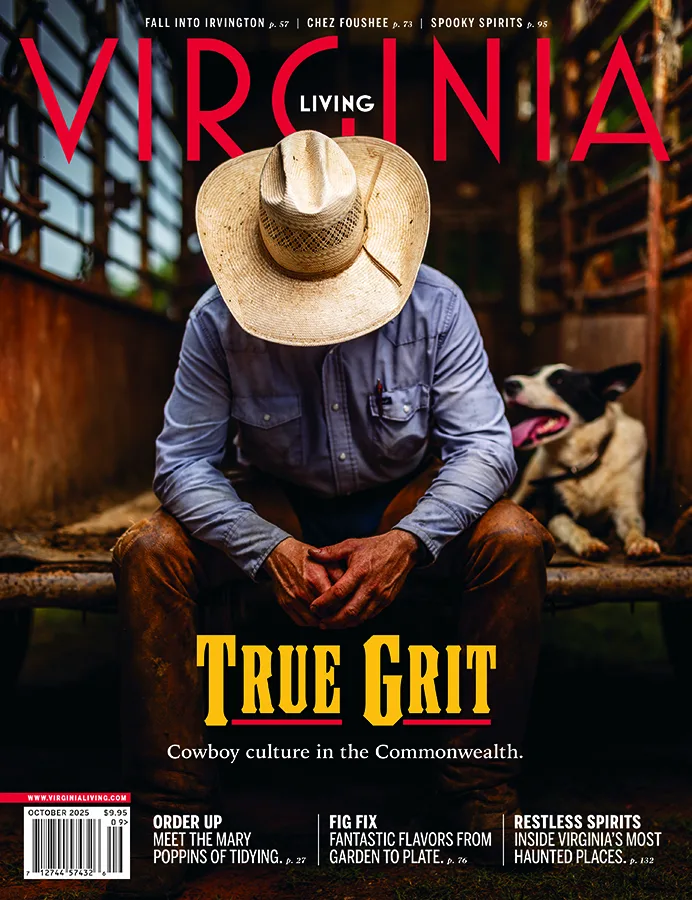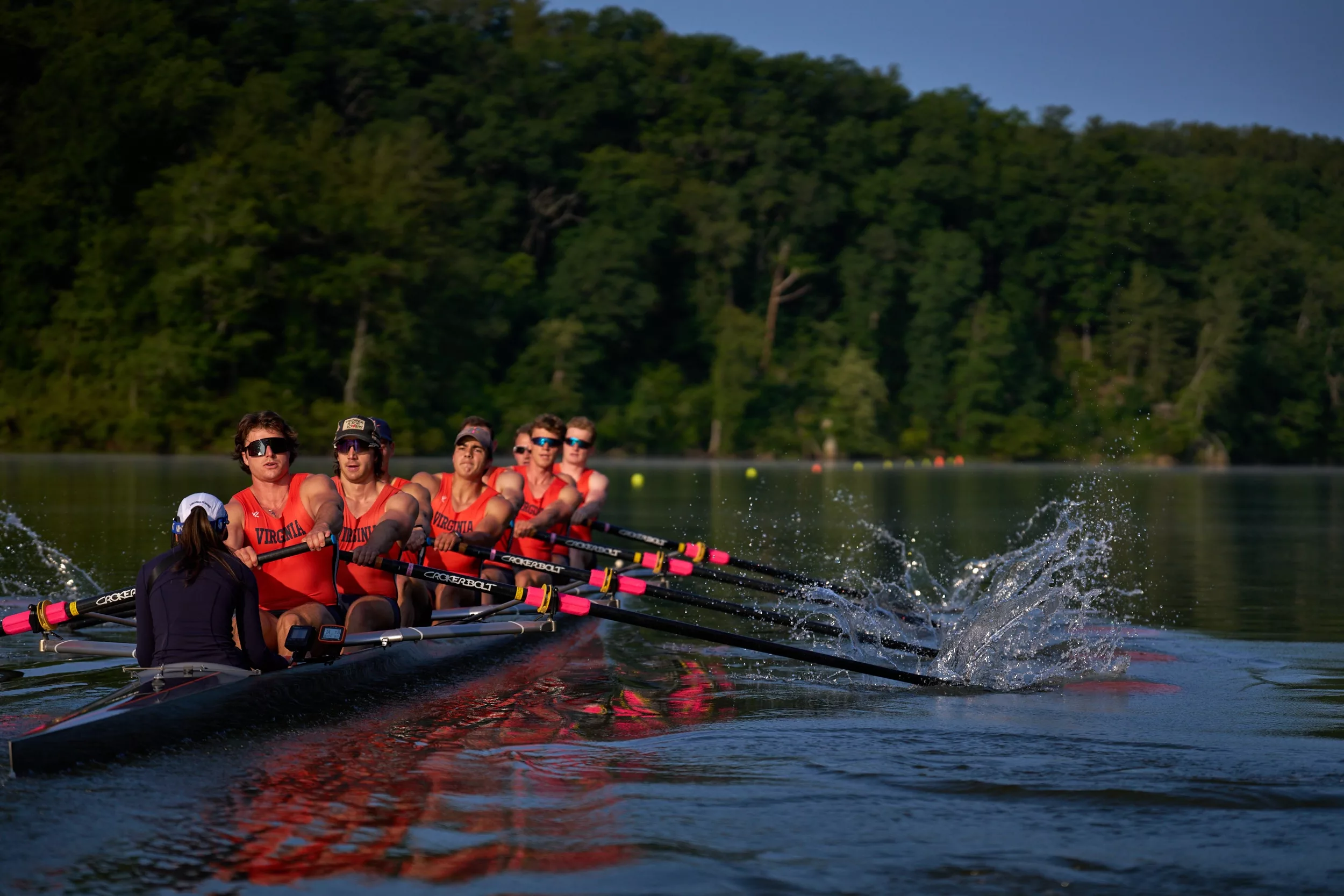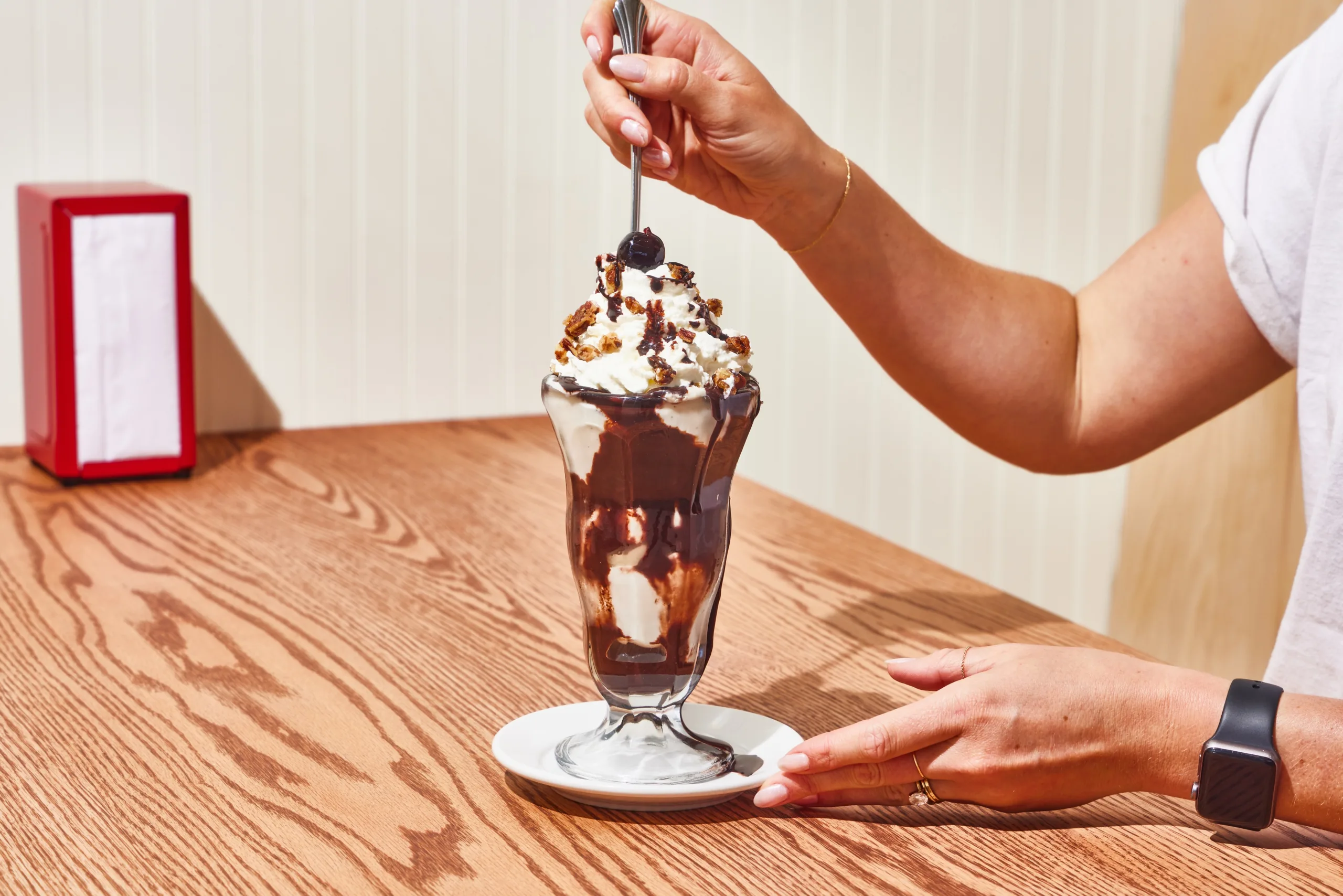More than a sport from an age of mythic gods & heroes, crew is arguably a contest of endurance, power, & resilience without equal.
Imagine you’re sliding into the seat of a crew shell. It’s at the start of a big race. You’re in an eight boat, which means eight of you will be rowing together, and you carefully lower yourself into the slender craft with both hands on the sides so your feet do not touch the bottom. Sitting on the scalloped seat, you slide your stocking feet into the foot rests and lace up. It’s a tight fit. The shell is so thin that you sense water pressure against the sides, and your foot might crack through the bottom if you stand on it.
After you get settled in, the coxswain—the teammate in charge of the boat who steers from the back—tells you all to push away. Everyone puts the tip of an oar against the dock and pushes off, sending the shell out and away, into hours of an engaging workout.
More than a sport from an age of mythic gods and heroes, crew is arguably a contest of endurance, power, and resilience without equal. From spring to fall, you can see a virtual armada of rowers launching in shells from the docks of rowing clubs along the storied waterways—from the Potomac to the James, Occoquan, Rivanna, and others—for a workout of rowing past the wetlands, fields, and wildlife. When you find yourself daydreaming of an escape from your Sisyphean daze, crew offers a primal adventure in a new sensory environment.

The Race is On
At the race, a horn sounds. You explode back halfway, then shoot forward. It’s a racing start. Not full strokes, but half-strokes at a high rate of speed—45 a minute, an adrenaline surge to accelerate. Bring it down to 35 at full length for 1,000 yards. All eight seats are running on rails, the oarlocks are thunking, and oars rolling flat in unison. The boat sets up. You feel the swing of the rhythm. Everyone feels it. The boat starts to move. The cox yells to give her 10—full power. Hit it! For the rest of the race and your whole life, you will remember this most exhilarating of sports—one more ancient than Greece, and still thriving today.
“It is a lifelong pursuit, that feeling of swing,” says Robin Kaczka, president of the Rivanna Rowing Club in Charlottesville. She took up crew 10 years ago. “I think I’ve felt it once,” she adds, with laughter.
“When you feel it, you will know,” says Frank Billing, the men’s rowing team coach at the University of Virginia. A Swiss native, he joined UVA in 2002. The red boat house, which the UVA team shares with the Rivanna Rowing Club, sits uphill with a view of the airport road bridge as it spans the Rivanna. Drivers, runners, and cyclists can glimpse the teams out rowing amid clouds of mist.
The number of rowers is rising on the James River in Richmond, where the Virginia Boat Club shares boat houses with several school clubs. The club’s roots go back well over a century—to 1876 when its seven inaugural members, who were from the Olympic baseball team, founded the Olympic Rowing Club and rowed the Kanawha Canal, from downtown to the Pump House in what is now Byrd Park.
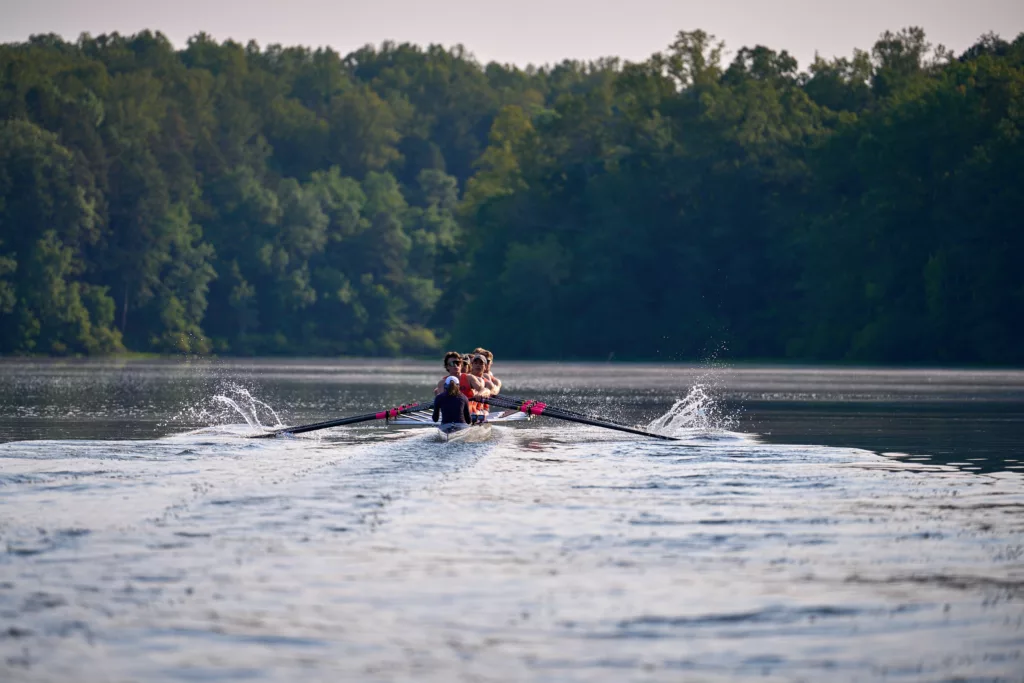
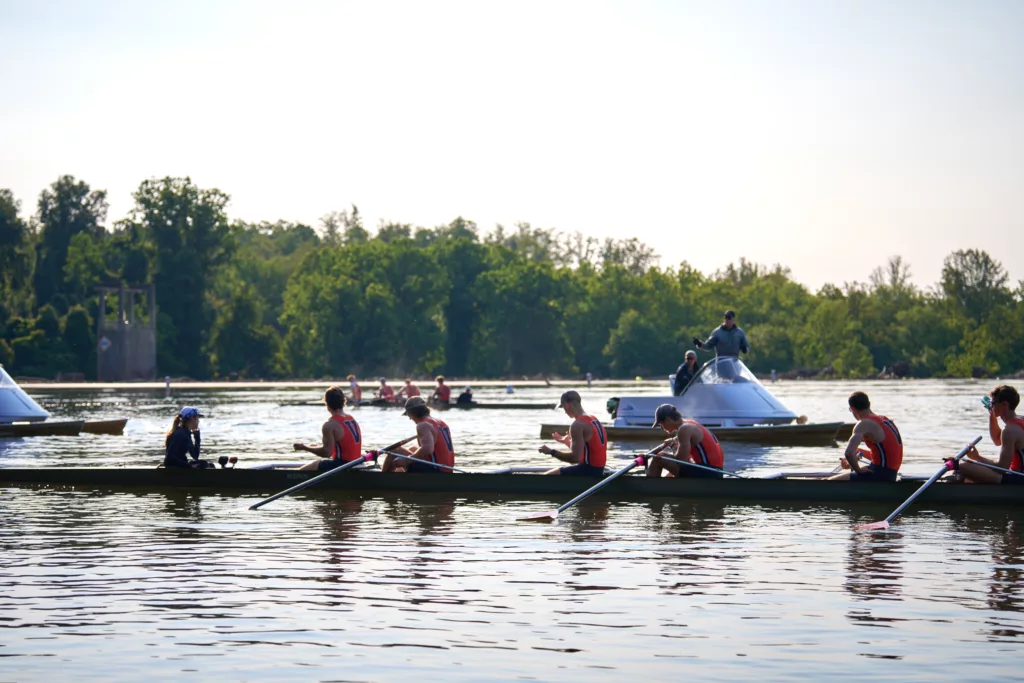
Former UVA head coach Kevin Sauer (at right, standing) assists in practice as a guest coach with assistant coach and team manager, Graham Hall (in boat, seated).
Setting the Boat
Steven Bosshard is the club’s current president and a veteran rower himself. He’s studied the mysteries of setting up a shell, and says, “Trying to set the boat is a black art in my opinion. Once the boat starts to click, and people get it under control, it gets to be a lot more enjoyable.”
Weather, traffic, and the river itself present obstacles to rowers.
But luckily, the Rivanna is made for rowers. “Random summer storms can come in, but even then, you’re protected by the high banks,” says Billing.
Bosshard describes the bucolic scenery above Watkins Landing on the James as its own nine tranquil miles of quiet, where water traffic is limited to the occasional long-distance swimmer, people fishing, or motor boating. They glide by field and tree with a 19th-century air captured by Thomas Eakins’ brush, featuring rowers sculling in the afternoon light of August. It’s not always romantic or picturesque, though, when frost blooms in cubist fractures in the wetlands and trees sway with that leafless crackling.
“We get the water temperature from the National Weather Service,” Bosshard explains of the James. “Then, of course, the air temperature, and if the two of those don’t combine to equal 100 degrees, we don’t row.”
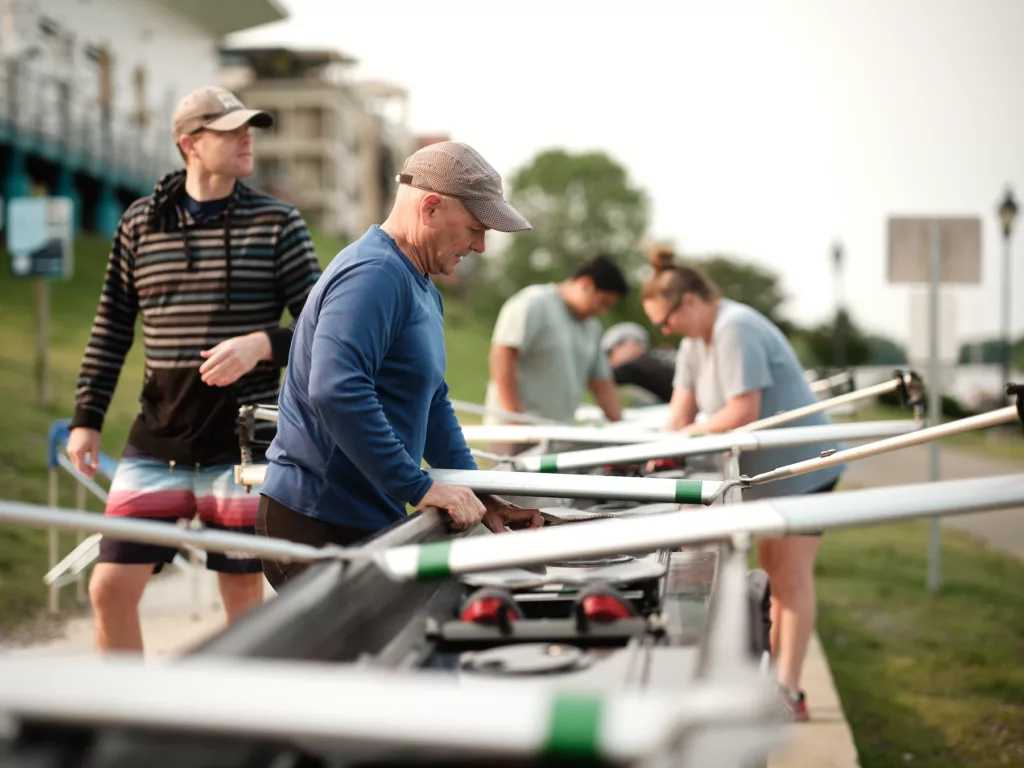
VBC’s Masters group preparing to launch in the James River.
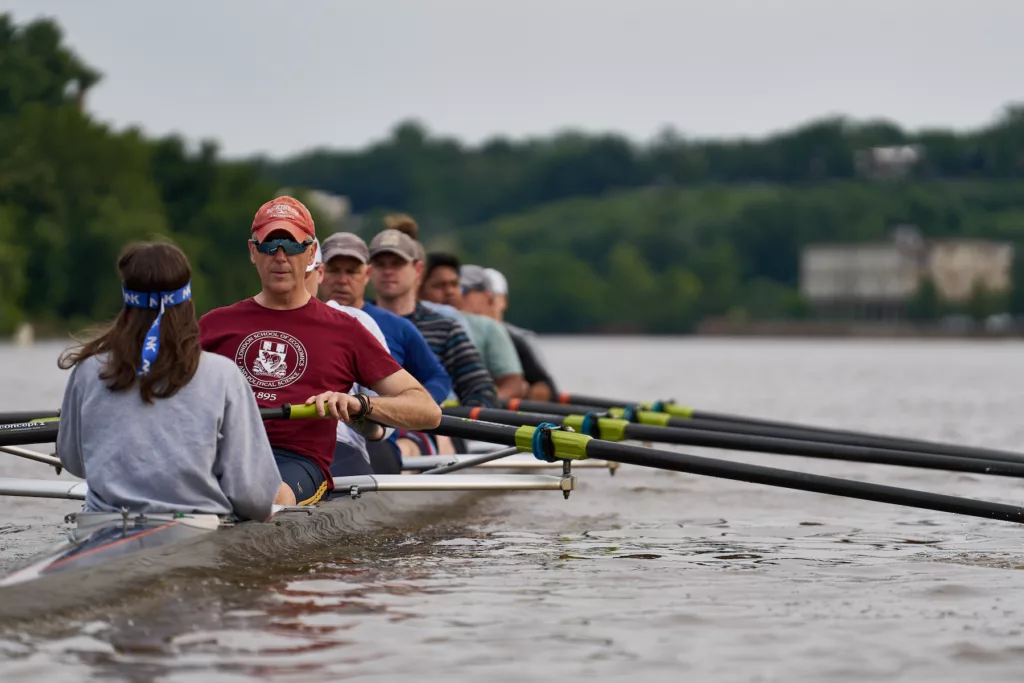
VBC’s Masters group rows on the James. L-R: Coxswain Anna Whitney, Rob Havers, Whitney Hansen, Trip Phaup, Ross Phillips, Elizabeth Klaczynski, Chris De Leon, Jim Gunson, Sarah Tammaro.
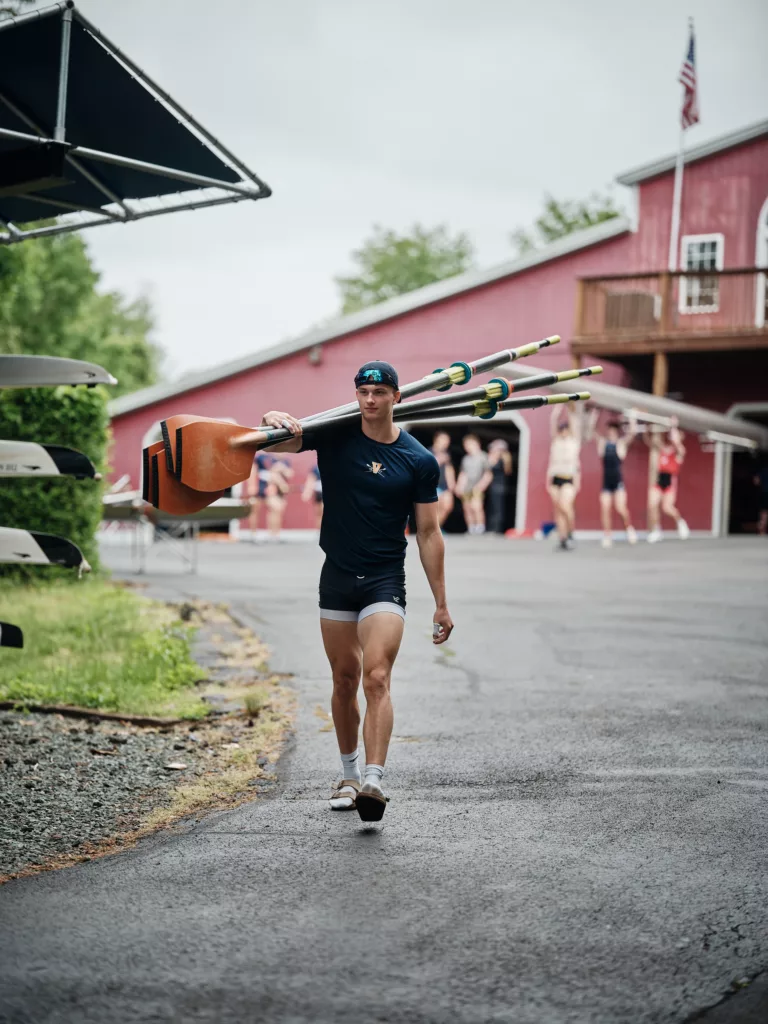
Chase Baumgarten from UVA’s 1st Novice 8 prepping for practice, oars in hand.
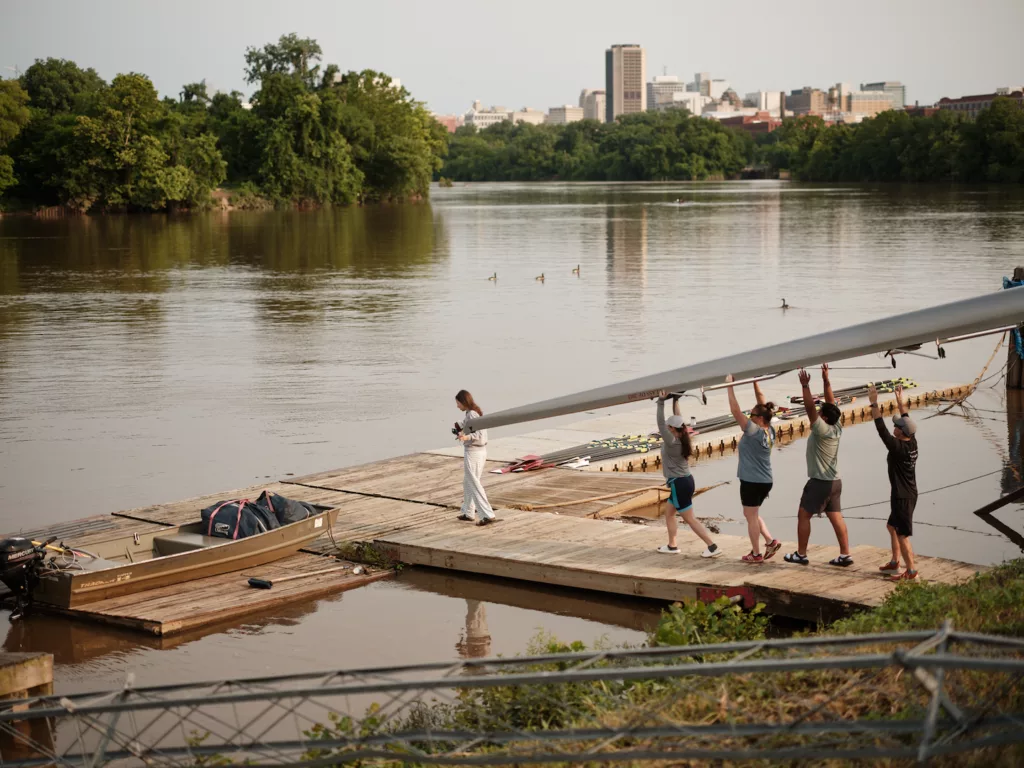
L-R: Coxswain Anna Whitney, Sarah Tammaro, Elizabeth Klaczynski, Chris De Leon, Jim Gunson.
Immeasurable Benefits
Given the ease of wintering in the TV cave, crew coaches have seen the rise of generational inertia, which worries them.
“Kids have been sedentary all through middle school and high school, so to get them out to do a sport is freaking impossible,” Billing says. Against the rise of helicopter and snowplow parents, teens have famously vanished into the digital labyrinth of phones and laptops.
“I can see how the past several years have contributed to less activity,” Kaczka says. “Our family philosophy was you had to pick something to do.” She and her son began rowing in 2022; today, he is on the UVA team—a catalyst for unbelievable progress in each of them.
“If you had seen me ten years ago, you would have thought I needed a hip replacement,” she laughs. “I’m in much better shape than I was when I started.”
“My son has felt embraced wherever he is at his level,” Kaczka adds. “You don’t have to be the top rower. He is a rower who is part of a whole team. He feels valued.”
Rowing—whether alone or with others—offers immeasurable benefits. It builds endurance and strength that you feel every morning when you throw your legs out of bed. It’s an odd sport, done facing backwards, where you can only look where you’ve been. So you focus instead on rhythm, intuition, and strength, moving to the quiet splashes of oars and the evening’s cool hush on the water behind you.

UVA’s 1st Novice 8 rowers en route to the boat house after practice.
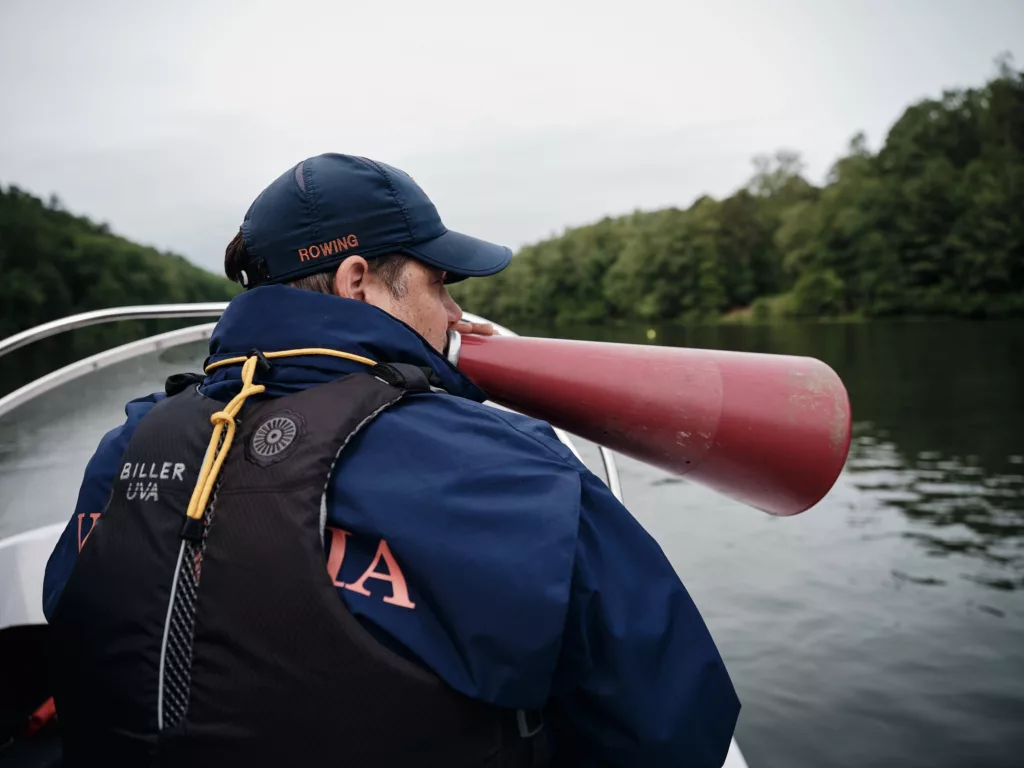
UVA Coach Frank Billing on the megaphone instructing rowers during training.
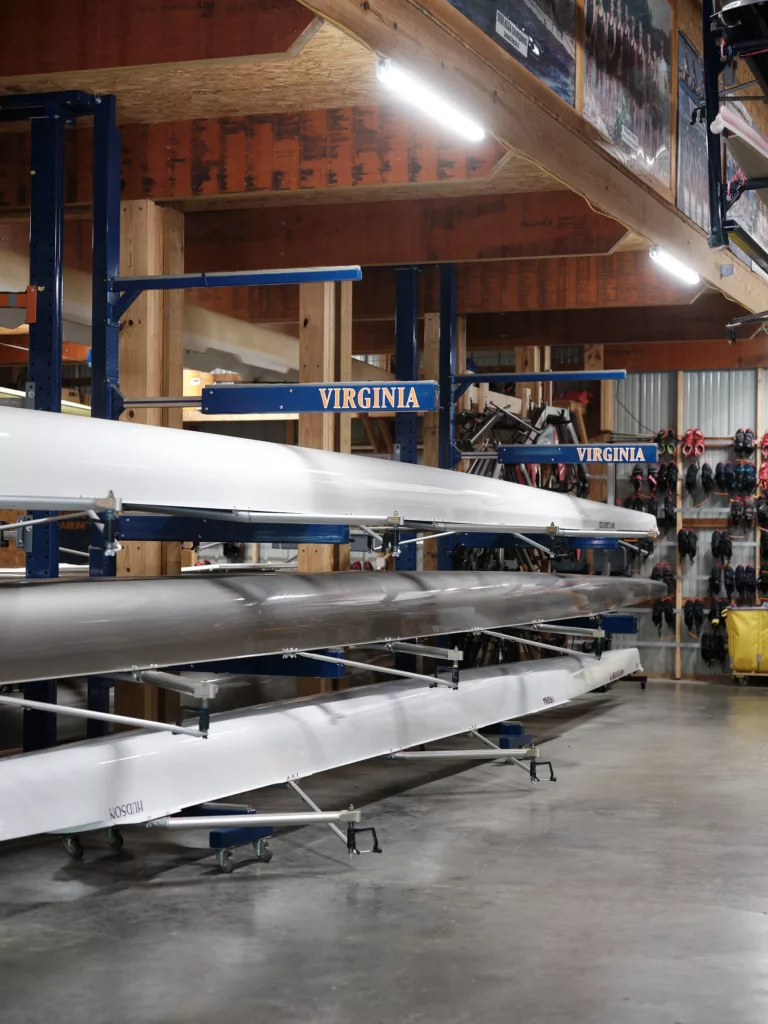
UVA’s boat house.
Stroke By Stroke
The quiet power of Virginia crew.
Writer Avery Chenoweth sat down with Steve Bosshard, president of the Virginia Boat Club. Excerpts from their conversation follow:
AC: “Getting the boat set”—what does it mean, and why is it important?
SB: Getting the boat set is a real challenge. It means achieving a balanced and stable position of the boat while the rowers are rowing, or even when the boat is at rest. We work on it like crazy because it’s so much more enjoyable when you’re in a nice, set boat. In the early part of the season, there’s a lot of splashing, a lot of people complaining because they can’t get their oar out of the water or they’re not positioned in the boat optimally. But as the season goes along, eventually you get better.
AC: Where do you row?
SB: We have two Boat Houses—one at Robious Landing Park in Midlothian and the other at Rocketts Landing downtown. The Virginia Boat Club is an adult rowing club, and we share a boathouse with James River High School’s rowing club as well as River City Crew, also a youth club.
AC: When do you row? Are there optimal times?
SB: We row constantly. When the weather warms up, people row every day. Some come as early as sunrise, others at 7 a.m., and are usually off the water at 8 or 9, especially in the summer when it gets really warm. The busiest times are in the afternoon and evenings, when we easily have more than 100 people, between youth programs, River City Crew, and the Masters.
AC: Who are The Masters?
SB: We have a group of guys and gals who go to the Masters Nationals, a rowing championship hosted by U.S. Rowing. This year, it’s in Michigan in July. Masters has nothing to do with ability; it’s all age. Our youngest rowers are in their 20s, but mostly our rowers are starting in their 30s, with quite a few in their 40s, 50s, and 60s.
AC: Who are the oldest rowers?
SB: I’m one of them. I’m 78, but we have another guy who’s 81. He’s our oldest rower right now, and he’s very skilled. He’s been rowing all his adult life—he started when he was a teenager. We have a handful of 74-year-olds, quite a few in their 60s, and a whole bunch in their 50s.
AC: It sounds like a Thomas Eakins painting out there …
SB: That’s one of the benefits of sculling. Some people really like the quiet and solitude—we have a great place to row here on the James River, especially up above Watkins Landing. The whole length is over nine miles, and Robious Landing is right in the middle of that. Most of the scullers go up river when they start. Once you go up there, it’s mostly just wilderness that comes to the river.
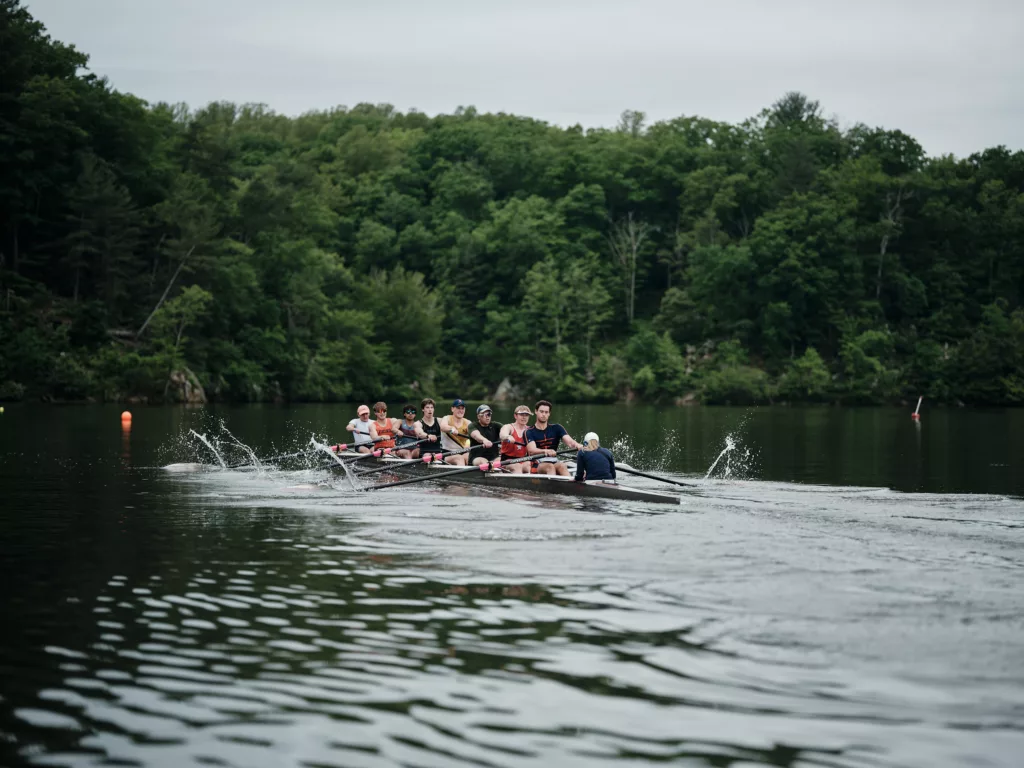
Join the Crew
Rowing Terminology 101
All sports have their own language. Build your rowing vocabulary so you can get the inside scoop.
Rowing vs. crew
These are, in fact, the same sport. The word “crew” is used by American schools and colleges to refer to the sport of rowing. The term comes from the nautical term for people who operate a boat—the term “crew team” is therefore redundant. Outside of the academic sphere, the sport is simply known as rowing.
Coxswain or cox: The lightest person, sits in the stern (back), doesn’t row, calls out speed, sets the rhythm of the stroke, and steers the shell.
Stern: The rear of a shell.
Port or port side: The left side of the boat when facing forward.
Starboard or starboard side: The right side of the boat when facing forward.
Bow: The front section of the boat. The first part of a boat to cross the finish line.
No. 8: The stroke seat in the stern, who faces the coxswain and sets the speed and rhythm according to the coxswain’s orders.
No. 7: Rower on the left side who follows the time and rhythm set by No. 8.
Nos. 6, 5, and 4: The power rowers in the engine room of the boat; they do much of the heavy power work for speed.
Nos. 3, 2, and 1: In the bow (front), where lighter but proportionately strong teammates are positioned for optimal speed.
Technique:
Drive: The propulsive portion of the stroke from the time the oar blade enters the water (‘catch’) until it is removed from the water (‘finish’). This part of the stroke is intense.
Recovery: The non-work phase of the stroke, where the rower returns the oar from the release to the catch, the part of the stroke where the rower is moving up to the catch, and the blade is out of the water. This is the calmest part of the stroke and a time to take a deep breath, but doesn’t really feel like a “recovery.”
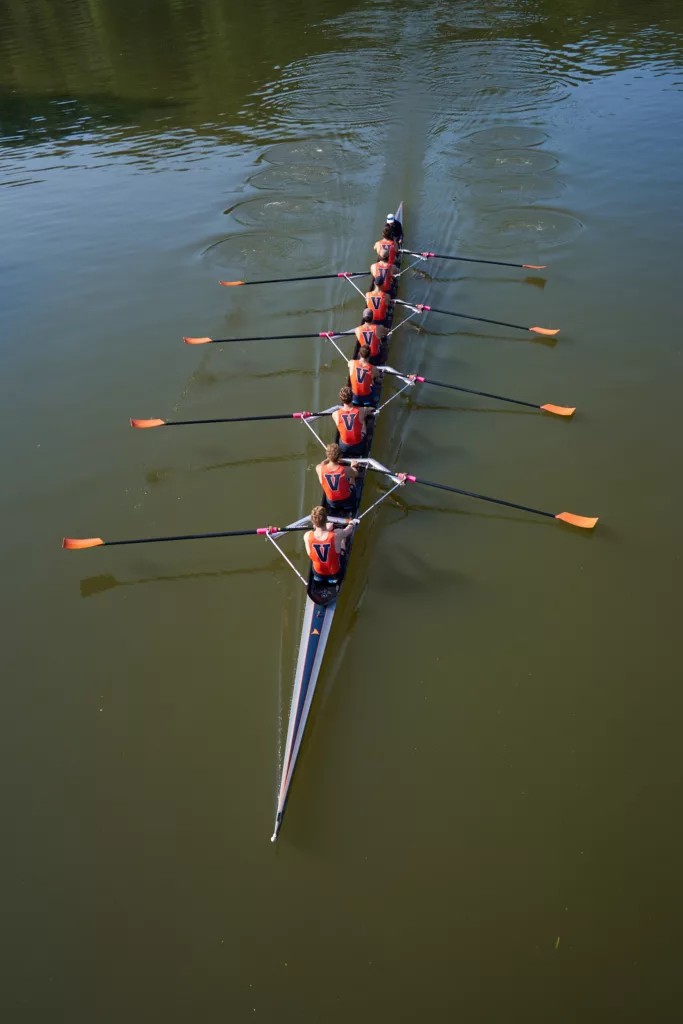
Shoptalk:
Eight (8+): A shell with eight rowers and a coxswain. The plus sign next to the number refers to the phrase “with,” meaning, with a coxswain. This is called a sweep boat.
Four (4-) or (4+): A shell with four rowers. 4+ means a four with a coxswain. 4- means a coxless four, often referred to as straight fours. This is a sweep boat.
Pair (2-) or (2+): A shell with two rowers. Coxed pairs (2+) are no longer rowed by most programs.
Octuple (8x): An eight-person boat where each rower has two oars sculling, with a coxswain due to its fast speed.
Quad (4x): A four-person boat where each person has two oars (can be with or without a coxswain). This is a sculling boat.
Double (2x): A sculling shell with two rowers, each with two oars.
Feather: To turn the oar so that its blade is parallel with the water (opposite of square).
Single (1x): A shell with one rower.
Scull: Refers to the boat itself when it’s a shell designed for sculling, meaning each rower has two oars; also the name for one of the two oars used by a rower. Also called a boat.
Sculler: A rower who rows with two oars, one in each hand.
Sculling: A boat in which each rower has two oars, a single, double, quad, or sometimes an octuple.
Shell: A term that broadly refers to the racing boat itself, often long and narrow, designed for speed and efficiency. Also called a boat.
Square: To turn the oar so that its blade is perpendicular to the water (opposite of feather).
Stroke: One complete cycle, including the drive and recovery.
Stroke Seat: The rower closest to the stern of the boat, responsible for stroke rate, cadence, and rhythm.
Sweep: A boat in which rowers have one oar each.
Swing: A magical feeling in the boat when the rowers are driving and moving the boat as one unit. What all rowers strive for.
This article originally appeared in the August 2025 issue.
